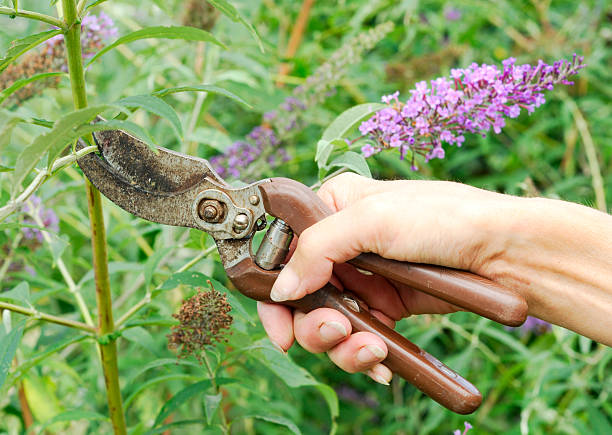Pruning secateurs are essential tools for every gardener, allowing precise and clean cuts that promote healthy plant growth. Whether you’re a professional landscaper or a hobbyist, having the right type of pruning secateurs can make all the difference in maintaining your garden. In this blog, we’ll explore the various types of secateurs and their specific uses, helping you choose the best option for your gardening needs.
Types of Pruning Secateurs
1. Bypass Secateurs
Bypass secateurs are the most commonly used type of pruning tool. They feature two curved blades that pass by each other when cutting, much like a pair of scissors. This design ensures a clean and precise cut, making them ideal for cutting live, green stems and branches.
Best for:
- Live plants
- Soft, tender stems
- General pruning tasks in the garden
If you’re looking to buy from a trusted pruning secateurs manufacturer, make sure to consider brands that offer high-quality, durable blades for bypass secateurs, as the sharpness and material quality will affect their performance.
2. Anvil Secateurs
Anvil secateurs have a single straight blade that closes onto a flat surface (the “anvil”), perfect for cutting through tough or dead branches. They don’t offer as clean of a cut as bypass secateurs, but they excel in trimming dead wood without damaging the tool.
Best for:
- Dead or hardwood
- Thicker branches
- Removing dry, brittle plant material
Gardeners seeking secateurs from reliable pruning secateurs should check if the blades are made from hardened steel, which provides strength and longevity, particularly for heavy-duty tasks like anvil pruning.
3. Ratchet Secateurs
Ratchet secateurs feature a mechanism that allows you to make stage cuts, reducing the effort needed for each snip. These are perfect for gardeners with weaker hands or those needing to easily cut through thicker branches.
Best for:
- Thicker stems and branches
- Gardeners with limited hand strength
- Continuous pruning work
Ratchet secateurs are also a popular choice among gardeners who want both precision and efficiency in their tools. Opting for a high-quality pruning secateur ensures the ratchet mechanism works smoothly and withstands frequent use.
4. Long-Handled Secateurs
For those hard-to-reach areas, long-handled secateurs offer the perfect solution. These secateurs have extended handles that provide additional leverage, allowing you to prune higher branches or areas deep within shrubs without needing to strain yourself.
Best for:
- Reaching high branches
- Dense bushes and shrubs
- Reducing strain during long pruning sessions
When choosing long-handled secateurs, ensure the manufacturer offers lightweight yet sturdy handles to prevent fatigue. A good pruning secateurs will prioritize both the ergonomics and durability of the tool.
5. Ergonomic Secateurs
For gardeners who spend extended periods pruning, ergonomic secateurs are designed to reduce strain on the hands and wrists. These secateurs often come with cushioned grips and non-slip handles, making them ideal for reducing fatigue during heavy-duty pruning tasks.
Best for:
- Gardeners with arthritis or hand fatigue
- Long hours of pruning
- Anyone seeking comfort during pruning
Conclusion
Choosing the right pruning secateurs depends on the type of plants you are working with and your specific gardening needs. Whether you need the precision of bypass secateurs, the toughness of anvil secateurs, or the ease of use provided by ratchet mechanisms, investing in quality tools is crucial for maintaining a healthy garden.
For the best quality tools, consider JCBL Hand Tools, one of the leading agricultural tools manufacturers including secateurs, designed for durability and precision. Their range of pruning tools is crafted to meet the highest standards, ensuring both efficiency and comfort in every cut.
